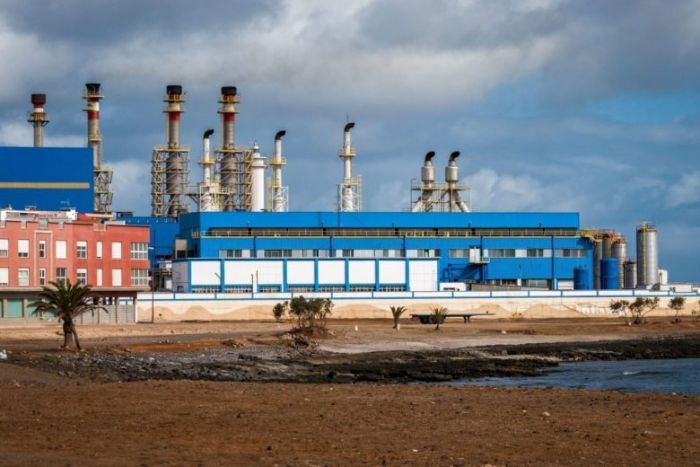Prospects for renewables in water production

Dr Corrado Sommariva, Founder and CEO at SWPC (Sustainable Water and Power Consultants)
With approximately forty percent of composition of water tariffs being represented by energy, photovoltaic (PV) solar has recently become the winning tool in recent desalination bids.
In recent tenders, developers have been allowed to install solar PV inside the desalination plant premises. This is designed to self-generate part of the electricity required for the desalination process, and therefore mitigate the electricity demand from the grid for values of up to approximately 10 per cent of the overall specific energy consumption. Figure 1 below schematically shows the roadmap towards sustainable desalination in the GCC in the last 20 years : from subsidised energy tariffs that have discouraged the application and development of energy efficient desalination, the industry has gradually opened to seawater reverse osmosis (SWRO). However, it was only recently, in 2017, when SWPC (Saudi Water Partnership Company ) introduced a minimum power efficiency of 3.5 kwh/m3 as a mandatory requirement for the new independent water projects (IWPs) in the Kingdom of Saudi Arabia.
Achieving a specific power consumption of 3.5 kwh/m3 seemed extremely challenging to many of the EPC contractors in the industry at the time, but advancements in technology led to this threshold largely being surpassed – with specific energy consumption today set around 3.1 to 3.2 kwh/m3.

Figure 1: evolution in desalination energy consumption
Thanks to the installation of solar PV in allowable areas in the power system, plant energy demand from desalination plants has further decreased to below 2.90 kWh/m3 and we are seeing the development of more efficient PV panels allowing further savings in the networks.
Power savings have, in turn, enabled developers to achieve extremely competitive water tariffs. The same concept is starting to be applied to waste water treatment plants along with the beneficial use of the sludge produced for energy generation. If these developments are applied, the domestic wastewater treatment plant sector may soon become energy and carbon negative.
The future: SWRO and a renewable energy grid
On the other hand, with power tariffs as low as 2 US cent/m3, the strive to reduce specific energy consumption in the desalination process may lose importance. In future, the emphasis would be to generate load, rather than to save energy, and to judiciously connect a mainly PV powered grid to desalination plants for sustainable water generation.
The options available to the industry in this case would be endless, and may start with the opportunistic use of SWRO to take advantage of the cheap PV energy generated during the day in order to produce more water during the peak sun hours when electricity availability exceeds grid demand.
Furthermore, if potable water storage is managed correctly, SWRO can be regarded as an energy absorber - producing more energy when excess electricity is available and producing less when there is significant demands on the grid.
Clearly this scenario would involve a larger installed SWRO capacity and lower plant availability. This mode of operation would reduce the electricity costs, the criticality of pre-treatment and the hurdles of the steady state operation. All this would still result in a lower tariff and no GHG emission.
Small captive plants sustainable and renewable operation and potential for growth
In parallel, the industry has developed more solutions to combine renewable energy with the process of water desalination. Existing state-of-the-art solar panels face physical limits on the amount of sunlight that can be actually turned into electricity. Normally about 10 per cent to 20 per cent of the sun that reaches the panel becomes power. The rest of this heat is considered as waste. The warmer the panel, the poorer the electricity conversion.
In order to try and combat this, Desolinator, for instance, has developed a new concept using closed-circuit cooling water to control the temperature of the solar PV. The heat harvested from the solar field is in turn transformed in hot water and then used as feedstock for an MED plant. The electric energy is used to operate a variable speed mechanical vapor compressor. The combined use of heat storage and battery accumulators enables a continuous operation of the desalination plant.

Figure 2: evolution in desalination energy consumption (courtesy of Desolenator)
A similar concept can be used to many of the new technologies available in the market from low temperature distillation (LTD) to Forward Osmosis (FO) to membrane distillation. A significant amount of heat could theoretically be harvested from all of the installed solar PV fields, and this, in principle, could become an alternative sustainable energy source to a new generation of low temperature thermal driven processes.
Power from salinity gradient
Very encouraging results have been obtained in several pilot plants generating power through salinity gradients. The process applied is reverse electrodialysis, a process that, thanks to the application of anodic and cathodic membrane, can generate power using the difference in salinity between two streams.
All desalination plants, but in particular SWRO facilities, generate a reject stream that is about 30 g/l more saline than the seawater salinity. Dispersion of this salinity plume often poses environmental issues for natural habitats and diffusers are generally applied in order to decrease the mixing area between the two streams.
Few power plants in Europe have been commissioned to take advantage of the salinity gradient in river estuaries largely as a result of costs, both CAPEX and OPEX, were not affordable. However, if technology continues to progress, energy consumption and the environmental impact of the desalination process may drastically decrease – significantly strengthening the relationship between renewables and desalination.
Energy & Utilities - Middle East and Africa Market Outlook Report 2024.
This must-have report for industry players offers a thorough understanding of the latest developments, challenges, and opportunities in the region, supported by data, analysis, and expert insights.


.png)
.png)

